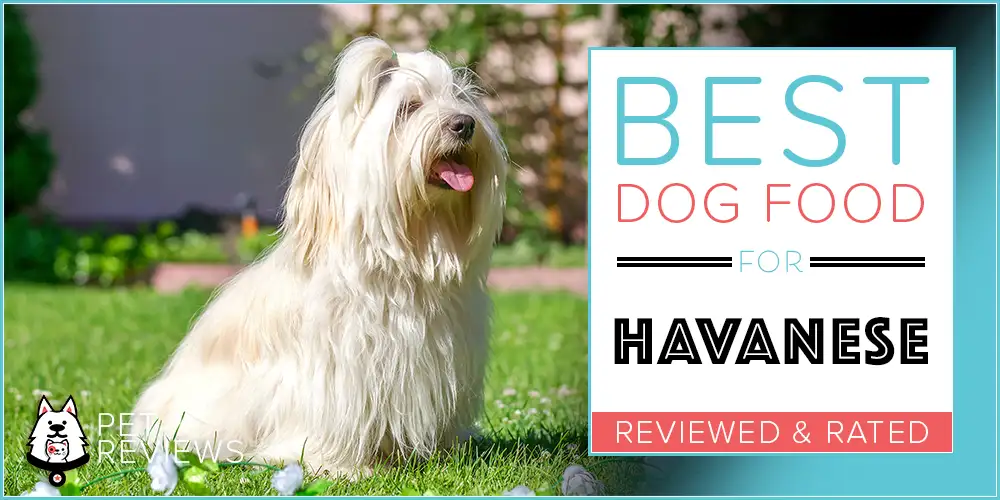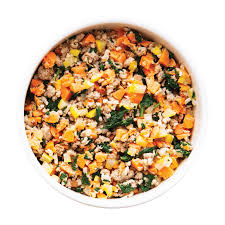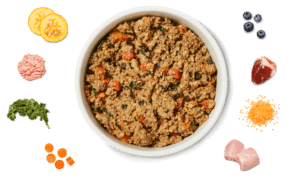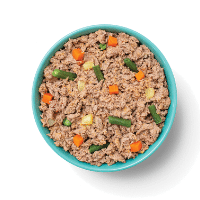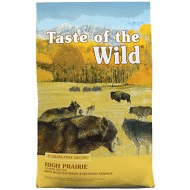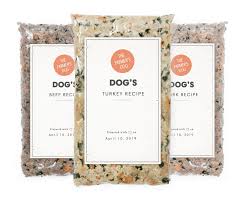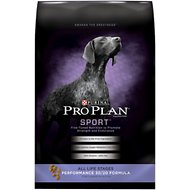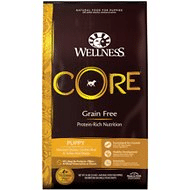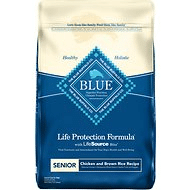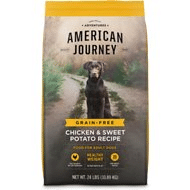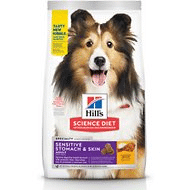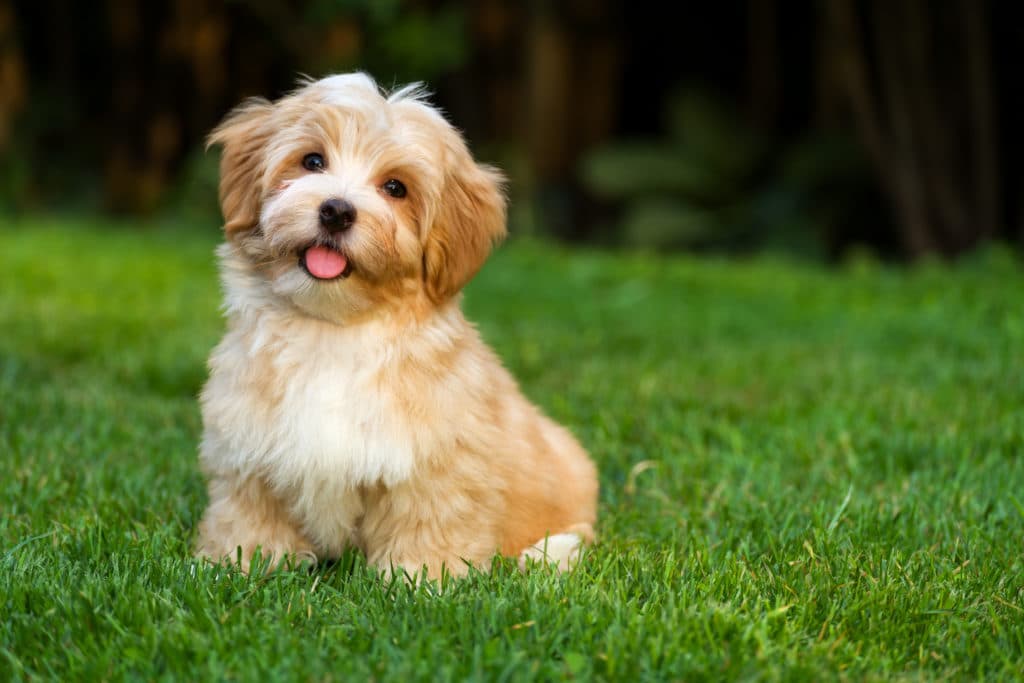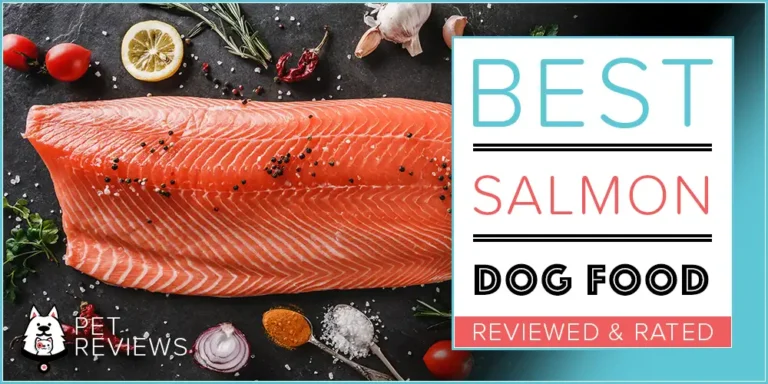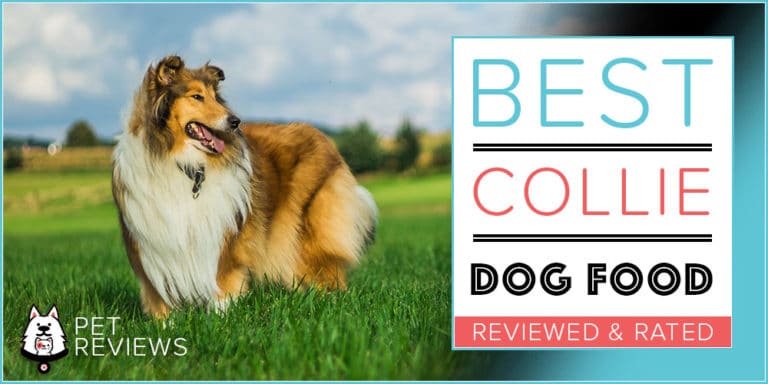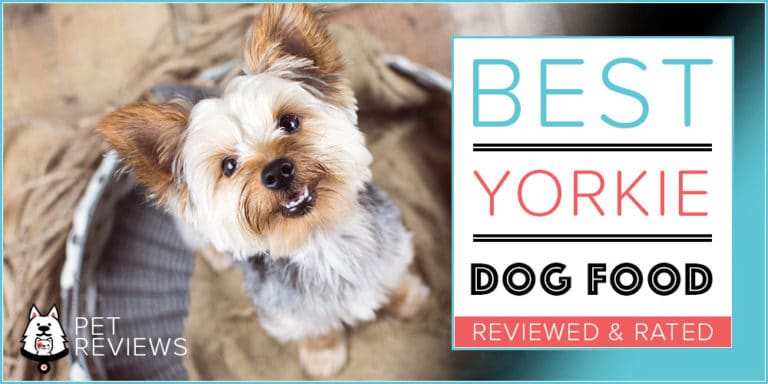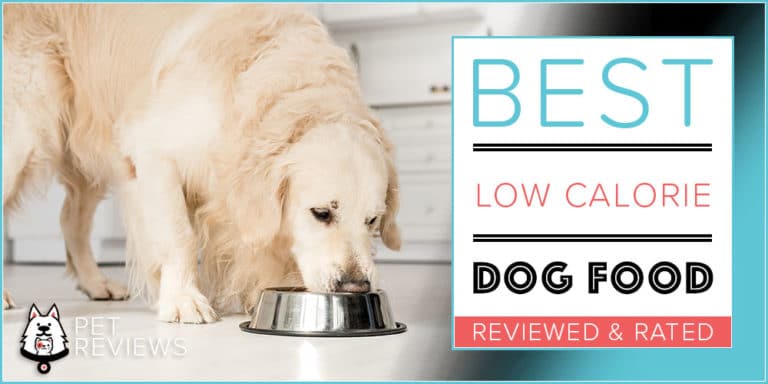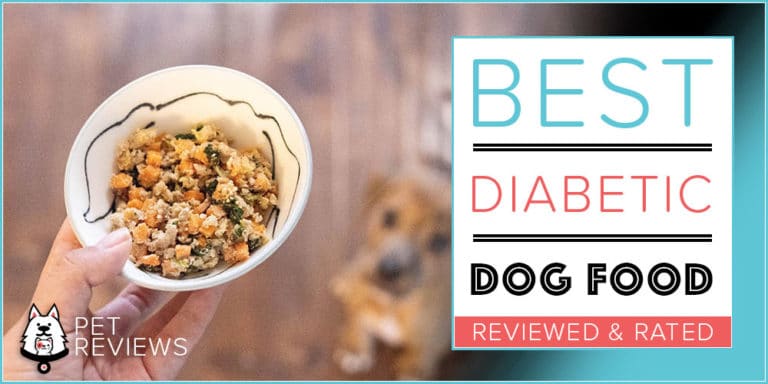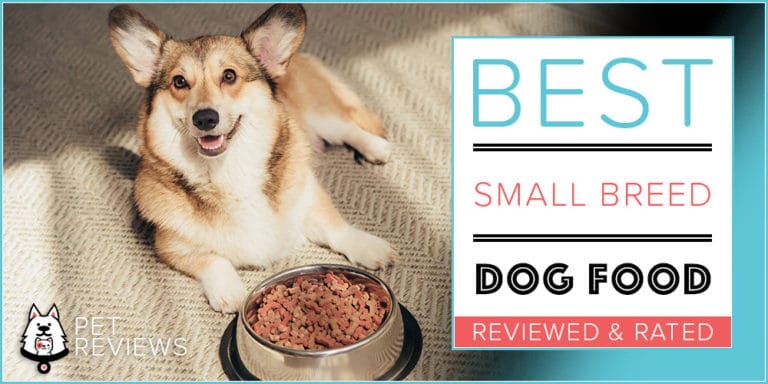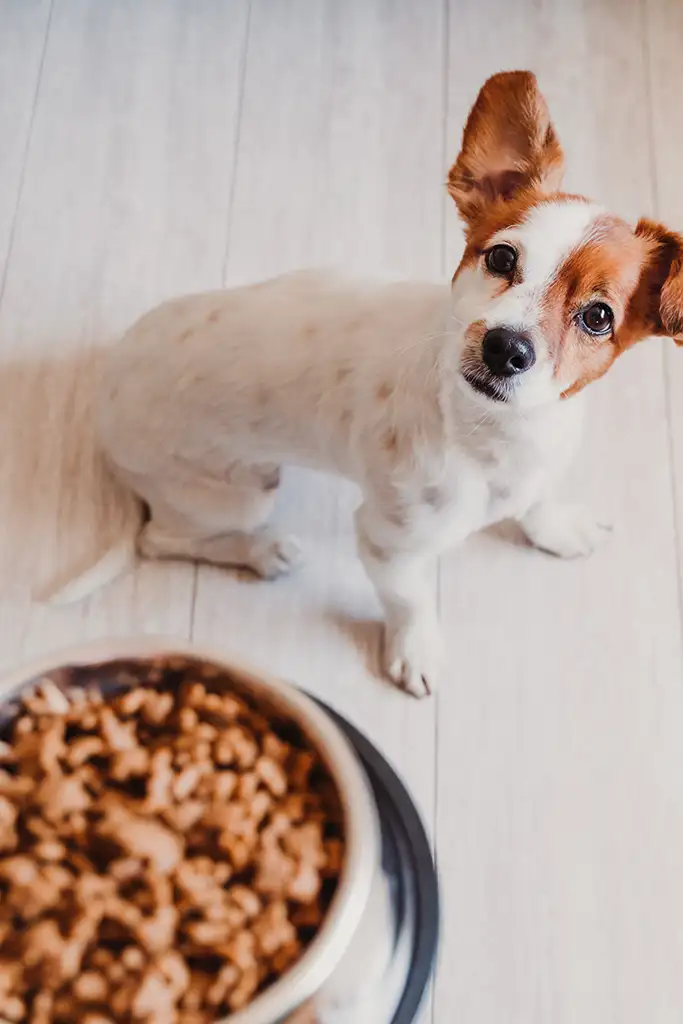What is the Best Dog Food for Havanese?
Quick Guide
- Story and Background
- Best Dog Foods for Havanese
- Nutritional Needs of a Havanese
- Special Dietary and Nutritional Considerations of Havanese
- Havanese Feeding Schedule
- Overall Best Dog Food for Havanese
- Our Top Pick—NomNom Fresh Food Delivery
- 10 More Top-Rated Dog Foods for Havanese
- Runner-Up: Ollie—Healthy Dog Food
- Fresh/Super Premium: A Pup Above—By Dog Parents for Dog Parents
- Most Popular: Taste of the Wild
- Best Value: The Farmer’s Dog—Fresh, Healthy Pet Food
- Pea Free: Purina One
- Best for Puppies: Wellness CORE
- Best for Seniors: Blue Buffalo
- Best for Overweight Havanese: American Journey
- Best for Sensitive Stomachs: Hill’s Science Diet
- Best for Havanese with Allergies: Canidae
- FAQs
- Conclusion
We have carefully explored some of the best dog foods for this adorable, fluffy breed of a small dog with a big personality larger than life, and we have put together some valuable and beneficial information for you in this article.
But first, let’s take a look at the fascinating history of the Havanese and learn a little bit about where they came from and how they became so loved by families all over the world.
Story and Background
The Havanese is a small, cute, energetic, adaptable, and people-oriented dog with a soft, silky coat and long hair whose favorite thing is to snuggle comfortably in your lap. It’s the national dog of Cuba, and it is the country’s only native breed.
Ship’s logs from the early sixteenth century let us know the early Spanish colonists brought these dogs along during their first voyages. They began the colonization of the island in the ten years after Christopher Columbus triumphantly raised the flag there in 1942. Spain owned Cuba for the better part of the next four hundred years.
Since the first settlers came primarily from Tenerife’s island, logic tells us that the Havanese was most likely the Tenerife dog, a common ancestor to all the ancient Bichon family. The dog quickly found its way into the homes of the resident Spanish aristocracy.
It was often called the Spanish Silk Poodle or the Havana Silk Dog due to its uniquely remarkable coat—extraordinarily soft and light—that makes the dog very heat-resistant by providing insulation against the tropical rays.
Regardless of the massive trade restrictions that Colonial Cuba initially suffered, it flourished by the 18th century and became the New World’s cultural center. Its elegance and splendor surpassed anything Britain had accomplished in its colonies by far at that point.
The European aristocracy loved Havana and brought the Havanese dog back to the royal courts of England, Spain, and France. By the mid 18th century, Queen Victoria owned two of these adorable, intelligent, friendly, and spunky little dogs. Charles Dickens also had one.
Meanwhile, a new class—the bourgeoisie—emerged in Cuba. The adaptable little ball of fur became the number one family dog among its members and is still firmly holding its position as a family extraordinaire today.
The Havanese found their way to America during the Cuban revolution when a handful of Cubans who owned these dogs migrated here. By the end of the 1970s, the Havanese was already a prevailing breed. Virtually all of the Havanese in the world today—minus those remaining in Cuba and some other small exceptions—stem from those immigrants.
Judging by portraits and paintings from the eighteenth century, these dogs have remained pretty much the same as they were back then.
Best Dog Foods for Havanese
We have put together a handy list of nutritional foods and have taken a close look at each one to help you make an informed decision and choice when it comes to the food you give to your Havanese, as this is easily the most crucial part of caring for these little balls of fur.
- Our Top Pick: NomNom Fresh Food Delivery
- Runner-Up: Ollie—Healthy Dog Food
- Fresh/Super Premium: A Pup Above—By Dog Parents for Dog Parents
- Most Popular: Taste of the Wild
- Best Value: The Farmer’s Dog—Fresh, Healthy Pet Food
- Pea Free: Purina One
- Best for Puppies: Wellness CORE
- Best for Seniors: Blue Buffalo
- Best for Overweight Havanese: American Journey
- Best for Sensitive Stomachs: Hill’s Science Diet
- Best for Havanese with Allergies: Canidae
Nutritional Needs of a Havanese
A healthy, balanced diet is critical when it comes to the overall well-being of Havanese dogs. The ideal ratios of protein, fat, and carbohydrates are vital, as they are with dogs in general.
Protein
As the building blocks for healthy tissues, cells, organs, and muscles, the amino acids found in protein make it an essential nutrient for all dogs, including your precious Havanese. Best when it comes from animal sources like meat, fish, and poultry, protein supports the healthy growth and development of puppies and adult dogs’ lean muscle mass.
Carbohydrates
Carbohydrates have been deemed controversial, but the reality is that they are an essential nutrient for your pup’s health. They can ensure that your dog has sufficient levels of energy, vitamins, minerals, and the necessary dietary fiber.
The best carbohydrates recommendations are digestible whole grains, beans, legumes, and vegetables. Just make sure that they contain no more than a maximum of 5% fiber.
Fats
Following protein, fats are the second most important nutrient your Havanese needs because it provides a valuable concentrated source of energy.
Your pup requires plenty of healthy fat. Due to the dog’s small size and super-fast metabolism, an abundance of good fats is essential for your furry Havanese friend. Remember that these dogs burn calories at a very high rate.
Note that it is best when the fats come from animal sources like chicken fat and salmon oil.
Fruits/Vegetables
Except for blueberries, blackberries, strawberries, carrots, pineapple, and watermelon (seedless), fruits and vegetables are not so good—and can even be dangerous—for your Havanese. While it is true that they are incredibly healthy for humans, this is not always the case with canines.
Beware of peaches, apples, and plums in particular. They can release toxins that can be extremely harmful and even deadly to your Havanese pup. Grapes and raisins can cause renal failure, kidney failure, and even liver failure. Cherries can be detrimental to the intestines, and avocados can make your furry friend very sick.
Prebiotics/Probiotics
Prebiotics and probiotics support optimum digestive health and are very beneficial for all dogs. Your Havanese is no exception. Prebiotics and probiotics are nutrients designed to nourish and promote the growth of good bacteria in the colon.
For dogs that take medications, are stressed out, or are struggling with infections and bacterial imbalance or parasites, probiotics can do miracles. They can also help your Havanese in their old age.
If your dog is healthy, a probiotic may be an excellent idea if there is a tendency to get diarrhea or before an event that may be stressful for your pup and possibly cause anxiety—like boarding or attending a dog show.
Special Dietary and Nutritional Considerations of Havanese
As mentioned above, the Havanese is a generally healthy dog breed with a long life-span. There are some instances, though, of inherited hip dysplasia. There are also overall high risks of musculoskeletal issues.
Health Issues
Most of the health issues for Havanese dogs are related to the eyes, the musculoskeletal system, and the heart. Some of the conditions that these lovely little rascals may be prone to are as follows:
- Cataracts
- Deafness
- Heart murmur
- Portosystemic shunt (PSS)
- Mitral valve insufficiency
- Elbow dysplasia
- Hip dysplasia
- Chondrodysplasia
- Patellar luxation
- Legg-Calve-Perthes disease
Cataracts form in the lens of the eye and cause partial or total blindness. In general, the good news is that eye conditions are not painful and don’t necessarily require treatment unless they spread to both eyes and cause complete blindness. Cataracts are hereditary, and as a responsible dog parent, you should have your Havanese’s eyes checked annually.
Another eye condition Havanese can develop—and is usually hereditary as well—is retinal dysplasia. Tear staining is also a common cosmic issue caused by overactive tear glands.
Cardiovascular problems arise when there is a disturbance in the blood flow, and heart murmur often indicates another condition. Portosystemic shunt results in high toxicity levels in the blood, due to blood from the digestive tract skipping the liver.
Deafness is, unfortunately, also common in Havanese dogs. Generally, breeders are responsible for testing the hearing of all puppies before they sell them. They test each ear individually and usually spay/neuter the parents of puppies who exhibit deafness.
Talking to the breeder about your puppy’s hearing tests is essential and shouldn’t be overlooked.
Mitral valve insufficiency, or heart valve disease, is common in older dogs and small-size breeds like the Havanese. The heart has four valves composed of elastic and collagen tissues mixed with a substance called spongiosa. When the elastic and collagen tissues weaken and deteriorate, the spongiosa thickens and causes the valve to start flopping, stop closing correctly, and start leaking, which of course, causes problems.
The mitral valve separates the left ventricle from the left atrium and closes typically when the heart contracts, thus preventing blood from going back into the left atrium. When it leaks, the blood goes back into the left atrium and prevents the normal flow of blood throughout the body.
Unfortunately, this condition is incurable, and treatment—which involves many drugs— is only useful for keeping the symptoms at bay.
Musculoskeletal problems, like elbow dysplasia, hip dysplasia, chondrodysplasia, patellar luxation, and Legg-Calve-Perthes disease, are characterized by deformities or malformations of the joints.
In particular, Legg-Calve-Perthes is very painful, and treatment varies based on the severity of the symptoms. This condition can also lead to atrophy of the muscles, which considerably slows the recovery period and can make any medical therapy less likely to work.
Usually, surgery is the answer to atrophy. Luckily, dogs tend to recover well after going through the surgery. Experts suggest a genetic component to the development of Legg-Calve-Perthes, but the exact causes are unclear.
Daily Calorie Intake
As we have already established, Havanese dogs, specifically growing puppies and young adults, need plenty of calories due to their metabolism’s high speed. According to the National Research Council of the National Academies, a puppy or a young adult needs a daily intake of at least 466 calories. An active adult with a weight of 10 pounds requires an average of 404 calories per day.
Depending on your Havanese pup’s activity levels, you may need to ensure their daily intake of calories is even higher. You know your dog’s personality and habits best, and it is up to you to make sure that their most basic needs are met and satisfied.
Activity Level
Havanese dogs require minimal exercise. While they are incredibly social and energetic, they get most of the exercise they require through play and one or maybe two walks every day. These dogs should never live outside. It’s not unusual for them to even use a litter box at home—this aids in their overall house training, which can be quite a challenging process.
Havanese don’t have a problem playing either outside (in a fenced yard) or inside, but they are not dogs who do well when left alone, so they will expect you to play with them and give them loads of attention.
These energetic furballs can get anxious and depressed if left by themselves, so it’s a good idea to arrange a situation where your dog will not be left alone for long periods. Otherwise, problematic and destructive behaviors become very likely.
Havanese get so attached to their humans that they are also known as “Velcro” dogs because of it. They thrive on time spent with the family and are very protective, especially of children.
These dogs, small as they are, have surprisingly high endurance levels. A healthy and well-conditioned adult can run for up to 2 miles and exhibit remarkable stamina by hiking for up to 5 miles with no problem. Just make sure you take the necessary grooming measures to prevent their fine, long hair from matting or tangling.
Allergies
Like humans, the Havanese breed dogs can be allergic to pollen, mold, and dust mites. But while allergies in humans make them sneeze, allergies in Havanese dogs make their skin itchy. The condition is called atopy and is most common in the feet, folds of the skin, belly, and ears.
Symptoms of allergies often start showing up between 1 and 3 years of age, and they may get worse every year. Common signs are rubbing of the face, licking the paws repeatedly, and frequent ear infections. Luckily, though, there is a variety of treatment options out there.
Dietary Restrictions
In addition to the fruits mentioned earlier and the veggies deemed harmful for your Havanese, you should also stay away from pomegranates and anything that may pose a risk of your pup swallowing seeds or pits.
Walnuts, almonds, pistachios, and hickory nuts are also harmful. Macadamia nuts are particularly dangerous as they can cause both physical and neurological damage. Don’t give your Havanese pup any sugar or dairy products (like ice cream).
Chocolate is a big no-no for all dogs, and Havanese are no exception to the rule. The chemicals in chocolate are lethal to dogs. Coffee and tea are a terrible idea since they contain caffeine. Alcoholic beverages are also harmful.
Herbs and spices—like garlic, onions, and related foods, excess salt, nutmeg, and mustard seed—are dangerous and should not be given to your Havanese companion. Baking soda, baking powder, raw yeast dough, and human medicine and vitamin supplements are also toxic.
As long as you follow the necessary rules and guidelines and keep your Havanese on a balanced and healthy diet in which anything harmful is absent, you will ensure that your faithful companion lives a long and healthy life.
Skin Conditions
The most common skin condition in Havanese dogs is called sebaceous adenitis. Usually, you will first notice it between the ages of 1 and 5, and it involves scaly, dry skin with bald patches on the back, the back of the neck, and along the top of the head.
As with most skin conditions, early detection is crucial and makes a big difference in the length of the treatment process, which is already generally a long-term one and involves a combination of approaches.
Dogs respond differently to treatment, but you will most likely need to use special medicated shampoos to remove dead hair and skin. You will likely also need to give your pup fatty acid supplements.
Havanese Feeding Schedule
It would be best if you feed an 8-week-old puppy three times a day. 1/8 cup of dry food is sufficient per feeding. Leave the food bowl out for your Havanese puppy for 15 to 20 minutes and then pick it up. As your puppy grows, gradually increase the amount of food per feeding based on the instructions on the bag of food.
By the time your puppy is six months old, reduce the feedings to 2 times per day. When their 1st birthday comes around, you can feed them only once a day if you choose. Get to know your Havanese and their eating tendencies. They may require one large bowl per day or two smaller ones.
Remember that your puppy should look full but not round after eating. An overweight puppy is less likely to grow up healthy. When your Havanese is fully grown, it’s ok to leave the food bowl out all day without putting it away after feeding.
Of course, fresh, clean water should always be available and easily accessible for your pup.
Note: until your furry companion is six months old, make sure you stick with the type of food that the Havanese dog breeder was giving your puppy before bringing them home with you. Changing the food right away and giving your puppy anything else—like treats, greenies, and table food—can cause them to have soft bowels as their digestive system is too fragile.
You can start introducing the brand of food you prefer, along with dog treats, when your puppy is a little older.
Overall Best Dog Food for Havanese
Here are our 2024 Picks for the best Havanese dog foods on the market:
| Our 2024 Picks: Best Bernese Mountain Dog Food | |||
NomNom Fresh Food Delivery
|
CHECK PRICE | ||
Ollie—Healthy Dog Food
|
CHECK PRICE | ||
A Pup Above—By Dog Parents for Dog Parents
|
CHECK PRICE | ||
Taste of the Wild
|
CHECK PRICE | ||
The Farmer’s Dog—Fresh, Healthy Pet Food
|
CHECK PRICE | ||
Purina One
|
CHECK PRICE | ||
Wellness CORE
|
CHECK PRICE | ||
Blue Buffalo
|
CHECK PRICE | ||
American Journey
|
CHECK PRICE | ||
Hill’s Science Diet
|
CHECK PRICE | ||
Canidae
|
CHECK PRICE | ||
Our Top Pick—NomNom Fresh Food Delivery
NomNom is easily our top pick for 2024. A lot of care goes into preparing and distributing this amazing-quality, healthy, natural dog food. Each ingredient is taken very seriously and prepared individually for a perfectly healthy, balanced nutrition for your pup. The meals are custom-made and pre-portioned for your furry companion and are delivered straight to your door for your convenience.
On top of everything else, the packaging is recyclable. These guys show they are serious about the impact on our earth and try to reduce it as much as possible. Their holistic, nutrition-first approach is remarkable, and we highly recommend them for your Havanese.
Their dog food is packed with vitamins, as well as human-grade meats and veggies, to meet all of your pup’s needs. There are no fillers or artificial flavors present, and the maximum fiber content you can expect in any of their foods is only 2%.
10 More Top-Rated Dog Foods for Havanese
We have also included reviews of 10 other excellent choices for your Havanese pup. These foods are fantastic for addressing specific issues your Havanese may have—like sensitivity and obesity. We have also included the best choices for puppies and seniors.
Runner-Up: Ollie—Healthy Dog Food
Key Features
This food is prepared to perfection with your furry companion’s health in mind using whole foods, gently cooked to preserve each ingredient’s nutrients. There are no fillers like soy, wheat, or corn. The brand is an excellent choice for your adorable little furry companion. You can rest assured that they will love the superb taste and quality of the food.
All the necessary vitamins and minerals are present, and the fiber content does not exceed 2% in any of the recipes. You can choose from chicken, lamb, turkey, and beef recipes all packed with healthy veggies to ensure your Havanese’s nutritional needs are entirely met.
Pros
- Delivered to your door
- No fillers, artificial flavors, or by-products
- Made in the USA
Cons
- Can be expensive long-term
Fresh/Super Premium: A Pup Above—By Dog Parents for Dog Parents
Key Features
A Pup Above is another excellent choice of food for your Havanese dog. You can take your pick from beef, pork, chicken, and turkey. The company cooks their food sous-vide—slowly and evenly to preserve all the nutrients.
The brand was started by dog parents whose mission and goal were to make it easy for other dog parents to ensure that their precious furry baby is getting the best of the best when it comes to their diet.
There are no by-products, fillers, or artificial flavors present in any of the recipes. All vegetables are sure to be non-GMO and free of pesticides. There are no added hormones or antibiotics in any of the meats.
Pros
- Made in a USDA human-food facility
- Human-grade ingredients
- Single-source proteins
- Discount available with a subscription
Cons
- Food not portioned
- Expensive in the long run
Most Popular: Taste of the Wild
Key Features
Taste of the Wild is one of the most popular food brands for your Havanese. The company is family-owned and based in the USA and has scientifically advanced food safety protocols. The taste of the food is excellent, and your pup will love it.
Their recipes are natural, grain-free, rich in nutrients, and highly digestible due to the added probiotics. All the ingredients come from sustainable sources, and all the meat and fish used are real and humanely raised. You don’t have to worry about the presence of by-products or artificial flavors and fillers.
Pros
- Made in the USA
- Natural antioxidant support from real fruits and vegetables
- Affordable
Cons
- Some controversial ingredients like brewer’s yeast and tomato pomace
- Subject to several recalls in the past, although only one of them has affected the brand
Best Value: The Farmer’s Dog—Fresh, Healthy Pet Food
Key Features
This dog food seems pricey, but it will save you a lot of money that would otherwise go toward paying your pup’s vet bills. Havanese can be picky eaters, and The Farmer’s Dog is an excellent choice. You can rest assured that your pup is not getting any preservatives. The food is made in USDA kitchens and ensures that your companion will get all the vitamins and nutrients they need in their diet.
Your Havanese will also enjoy the superb taste, and you will have peace of mind knowing they are satisfied and healthy.
Pros
- Human-grade ingredients
- Pre-portioned
- No artificial flavors, fillers, or by-products
Cons
- Not very portable
Pea Free: Purina One
Key Features
This food is formulated specifically with active companions in mind and is an excellent choice for your energetic Havanese ball of fur. It contains live probiotics to support a healthy immune system and digestion, and it is rich in essential vitamins, antioxidants, amino acids, and minerals for healthy joints and excellent mobility.
Pros
- No artificial flavors or preservatives
- Contains glucosamine to help the aging process
- Affordable
Cons
- Includes corn by-products
Best for Puppies: Wellness CORE
Key Features
Wellness CORE is a beautiful choice for your Havanese puppy. Coated with probiotics to help digestion, it guarantees calcium and phosphorous levels to promote healthy bone growth.
It also contains the necessary nutrients to support healthy brain and eye development and a shiny coat. Wellness CORE sources its proteins from real chicken and turkey, and there are no by-products, artificial flavors, or preservatives present.
Pros
- Promotes healthy digestion
- No by-products
Cons
- High levels of potatoes, which may break down into sugars
Best for Seniors: Blue Buffalo
Key Features
Made with aging dogs in mind, Blue Buffalo is an excellent choice for your senior Havanese. The high-quality protein in the food ensures your pup’s energy and healthy muscle maintenance. There are no corn, soy, wheat, or poultry by-products present, and there is an abundance of omega-3 and omega-6 fatty acids for healthy skin and coat.
Pros
- Promotes a healthy immune system
- No by-products
- Affordable
Cons
- Not grain-free
Best for Overweight Havanese: American Journey
Key Features
This grain-free food is another excellent choice for your Havanese, especially if they struggle with weight issues. The food contains natural ingredients and essential vitamins and minerals. The first ingredient is always real chicken. American Journey also contains glucosamine and chondroitin and promotes the maintenance of healthy joints and mobility.
Pros
- No artificial flavors or by-products
- Reduced calories for healthy weight control
- Supports metabolism and muscle health
Cons
- Non-resealable meal wraps
Best for Sensitive Stomachs: Hill’s Science Diet
Key Features
Vets highly recommend Hill’s Science Diet. They specifically design their food for adult dogs with sensitive stomachs. Your Havanese is guaranteed to love this beneficial food high in vitamins. Prebiotics are present to aid digestion. This brand has been around for a long time and has decades of research under its belt.
Pros
- Made in the USA
- Natural ingredients
- Highly digestible
Cons
- Controversial vitamin D toxicity
Best for Havanese with Allergies: Canidae
Key Features
Packed with essential natural ingredients and containing probiotics, omega-3, omega-6 fatty acids, and plenty of antioxidants, Canidae’s quality is uncompromised. Your Havanese is guaranteed to fall in love with its excellent taste.
Canidae is a family-owned company focused on ensuring your furry companion gets the balanced and complete nutrition they require for their overall health and proper development. It is ideal for sensitive Havanese prone to allergies and a solid choice for your pup.
Pros
- Great taste
- Promotes healthy digestion
Cons
- Can be pricey
FAQs
As we approach our article’s conclusion, we wanted to wrap things up by answering some common frequently asked questions about the remarkable Havanese breed.
When Should I switch my Havanese Puppy to Adult Food?
Havanese puppies become fully grown adults at 12 months of age. At this point, it’s ok to go ahead and slowly start introducing adult dog food to your furry companion’s diet. We recommend that you start mixing adult food into their puppy food little by little until eventually, they are eating only the adult food.
Do Havanese Need Calcium Supplements?
In short, no. Multivitamins—especially vitamin D supplements high in calcium—are generally a bad idea. If you have established a healthy and well-balanced diet for your pup, no additional vitamins and supplements are necessary.
While small amounts of calcium are beneficial to the bones and teeth, too much can cause problems. Elevated calcium levels in the blood can result in calcium deposition in soft tissues like the lungs and heart, which can reduce your Havanese’s ability to function and cause kidney stones, vomiting, etc.
Is Fresh or Dry Food Better for My Havanese?
Generally, dry food is better for your Havanese. These dogs are prone to dental problems, and wet food can easily cause those. For tartar and plaque removal, control, and maintenance, chewing on kibble can be very useful.
Invest the time into finding good, balanced food for your Havanese. They will be happier and healthier for it. Good meat sources are their favorite foods, and they also enjoy fruits and vegetables. Just keep in mind the harmful fruits and vegetables discussed in this article.
What Kind of Vegetables Should Havanese Eat?
Veggies are indeed the primary source of vitamins and minerals for your Havanese. As long as vegetables are present in the food you give to your pup, you don’t need to provide them with anything extra. Veggie treats for good behavior, of course, are allowed.
In addition to carrots, some of the best vegetables you can give your Havanese are broccoli, cucumber, pumpkin, sweet potato, spinach, cauliflower, brussels sprouts, zucchini, and asparagus.
Conclusion
There indeed is much to consider before taking the step of seeking out a Havanese puppy. Still, the effort and time that go into their care, particularly into the type of diet you establish for them, are more than worth it.
Havanese dogs require special care and commitment, and if you are not ready to make that commitment, you should stop and reconsider before taking the leap and getting a Havanese dog—or any dog for that matter.
But suppose you are ready and up for the challenge. In that case, these dogs will give you unmeasurable amounts of love and affection, become a loyal member of your family, and brighten up each day with their unique personality and temperament and their energetic, spunky nature. With the right diet, your Havanese pup will be a healthy and happy member of your family for years to come.

